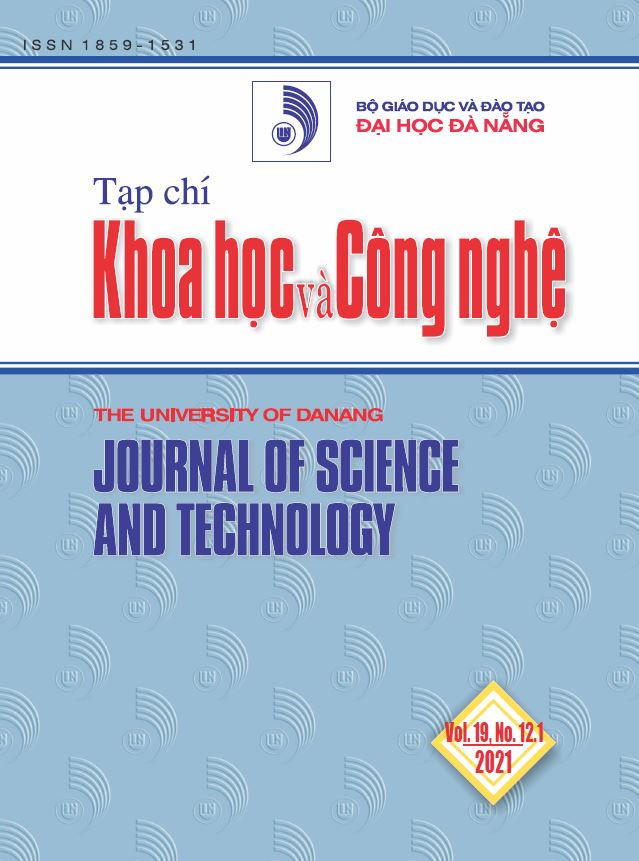Detecting the coral bleaching at the coral reefs of Son Tra peninsula and Cu Lao Cham Island in the South central coast region of Vietnam
 Tóm tắt: 249
Tóm tắt: 249
 |
|  PDF: 186
PDF: 186 
##plugins.themes.academic_pro.article.main##
Author
-
Duong Cong VinhNong Lam University – Ho Chi Minh City, VietnamNguyen Van KhanhThe University of Danang - University of Science and Education, Danang, VietnamKieu Thi KinhThe University of Danang - University of Science and Education, Danang, VietnamHoang Minh ThienThe University of Danang - University of Science and Education, Danang, VietnamSanchit KumarIndian Institute of Technology, Dhanbad -826 004, India
Từ khóa:
Tóm tắt
Coral bleaching events are of concern globally because of their adverse effect on the coral reef ecosystem. However, there is a lack of observed bleaching in many coral reefs in Vietnam, leading to difficulty in implementing the suitable management and protection solutions. The study aims to provide general information about coral bleaching in ST and CLC basing on bleaching alerts of NOAA Coral Reef Watch in 2019. Field data was collected by a photographic method for analyzing and classifying bleached coral. The results showed that coral reefs experienced low bleaching by an average of 8.86% and 9.09% in ST and CLC, respectively. In addition, the study broadly identified the relationship of sea surface temperature and Degree Heating Weeks to coral bleaching in the study area.
Tài liệu tham khảo
-
[1] Hoegh-Guldberg, E. S. Poloczanska, W. Skirving, and S. Dove, "Coral reef ecosystems under climate change and ocean acidification”, Frontiers in Marine Science, vol. 4, p. 158, 2017.
[2] S. Dawood, "Coral Reefs within Australian Coasts: Impact of Climate Change and Environmental Threats”, European Journal of Sustainable Development, vol. 5, no. 2, pp. 13-13, 2016.
[3] Hoegh-Guldberg et al., "Coral reefs under rapid climate change and ocean acidification”, science, vol. 318, no. 5857, pp. 1737-1742, 2007.
[4] O. Obura et al., "Coral reef monitoring, reef assessment technologies, and ecosystem-based management”, Frontiers in Marine Science, vol. 6, p. 580, 2019.
[5] Levy, C. Hunter, T. Lukacazyk, and E. C. Franklin, "Assessing the spatial distribution of coral bleaching using small unmanned aerial systems”, Coral Reefs, vol. 37, no. 2, pp. 373-387, 2018.
[6] Josephitis, S. Wilson, J. A. Moore, and S. Field, "Comparison of three digital image analysis techniques for assessment of coral cover and bleaching”, Conservation Science Western Australia, vol. 8, no. 2, pp. 251-257, 2012.
[7] K. Reaser, R. Pomerance, and P. O. Thomas, "Coral bleaching and global climate change: scientific findings and policy recommendations”, Conservation biology, vol. 14, no. 5, pp. 1500-1511, 2000.
[8] A. Marshall, H. Z. Schuttenberg, and J. M. West, "A reef manager's guide to coral bleaching”, Great Barrier Reef Marine Park Authority, Australia, 2006.
[9] Sully, D. Burkepile, M. Donovan, G. Hodgson, and R. van Woesik, “A global analysis of coral bleaching over the past two decades”, Nature Communications, vol. 10, pp. 1-5, 2019.
[10] J. van Oppen and J. M. Lough, coral bleaching: patterns, processes, causes and consequences, Second Edition, pp. 343-348. Springer, 2018.
[11] M. Eakin, H. P. Sweatman, and R. E. Brainard, "The 2014–2017 global-scale coral bleaching event: insights and impacts”, Coral Reefs, vol. 38, no. 4, pp. 539-545, 2019.
[12]
[13]
[14]
[15] Wilkinson and G. Hodgson, "Coral reefs and the 1997-1998 mass bleaching and mortality”, Nature & Resources, vol. 35, no. 2, pp. 16-25, 1999.
[16] F. Heron et al., Impacts of climate change on World Heritage coral reefs: a first global scientific assessment, UNESCO World Heritage Centre, 2017.
[17] D. Dung, "The status of coral reefs in central Vietnam’s coastal water under climate change”, Aquatic Ecosystem Health & Management, vol. 23, no. 3, pp. 323-331, 2020.
[18] K. Hoang, V. S. Tuan, T. M. Quang, D. T. Hoc, and H. T. Tuyen, "Bleaching of coral in Nha Trang, Ninh Thuan, Con Dao and Phu Quoc islands in June–July 2019”, Vietnam Journal of Marine Science and Technology, vol. 20, no. 40A, pp. 55–60, 2019.
[19] T. Vo, "Negative changes of coral reefs due to the natural catastrophes recorded recently in South Viet Nam”, Collection of Marine Research Works, vol. 19, pp. 182-189, 2013.
[20] NOAA Coral Reef Watch, Pacific Climate Update Coral Bleaching Heat Stress Analysis and Seasonal Guidance through September 2019, NOAA, 6/2019.
[21] V. Long and V. S. Tuan, Status of Coral Reefs in East Asian Seas Region 2014: Vietnam (Eds, Kimruma, 24 et al), Ministry of Environment, Government of Japan, 2014.
[22] M. Roelfsema, S. R. Phinn, and K. E. Joyce, "Evaluating benthic survey techniques for validating maps of coral reefs derived from remotely sensed images”, Proc 10th Int Coral Reef Symp, 2006, vol. 1, pp. 1771-1780, 2006.
[23] E. Kohler and S. M. Gill, "Coral Point Count with Excel extensions (CPCe): A Visual Basic program for the determination of coral and substrate coverage using random point count methodology”, Computers & geosciences, vol. 32, no. 9, pp. 1259-1269, 2006.
[24] Liu et al., NOAA coral reef watch 50 km satellite sea surface temperature-based decision support system for coral bleaching management, NOAA Scientific and Technical publications, 2013.
[25] C. E. Head et al., "Coral bleaching impacts from back-to-back 2015–2016 thermal anomalies in the remote central Indian Ocean”, Coral Reefs, vol. 38, no. 4, pp. 605-618, 2019.



